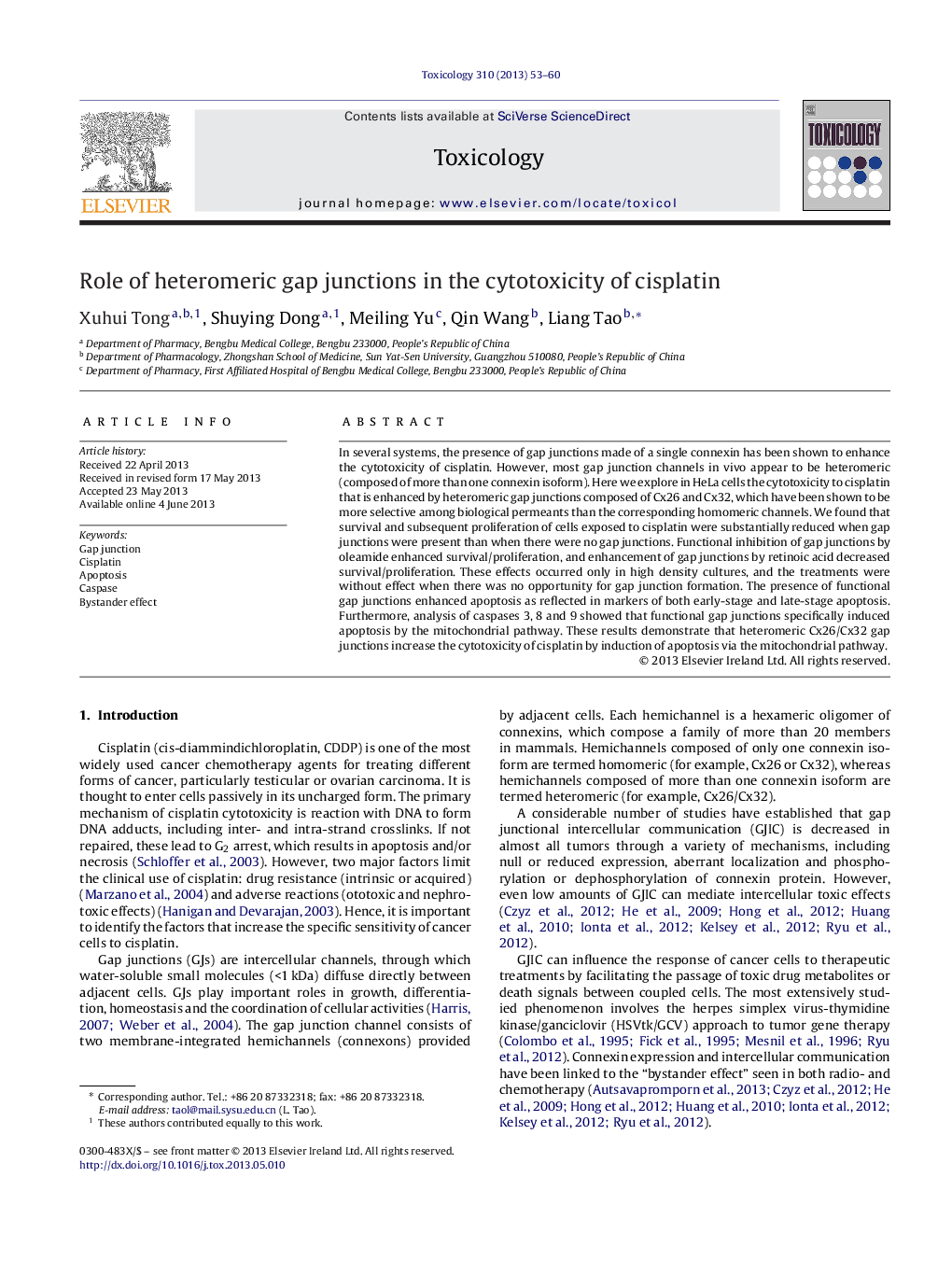| Article ID | Journal | Published Year | Pages | File Type |
|---|---|---|---|---|
| 2595630 | Toxicology | 2013 | 8 Pages |
In several systems, the presence of gap junctions made of a single connexin has been shown to enhance the cytotoxicity of cisplatin. However, most gap junction channels in vivo appear to be heteromeric (composed of more than one connexin isoform). Here we explore in HeLa cells the cytotoxicity to cisplatin that is enhanced by heteromeric gap junctions composed of Cx26 and Cx32, which have been shown to be more selective among biological permeants than the corresponding homomeric channels. We found that survival and subsequent proliferation of cells exposed to cisplatin were substantially reduced when gap junctions were present than when there were no gap junctions. Functional inhibition of gap junctions by oleamide enhanced survival/proliferation, and enhancement of gap junctions by retinoic acid decreased survival/proliferation. These effects occurred only in high density cultures, and the treatments were without effect when there was no opportunity for gap junction formation. The presence of functional gap junctions enhanced apoptosis as reflected in markers of both early-stage and late-stage apoptosis. Furthermore, analysis of caspases 3, 8 and 9 showed that functional gap junctions specifically induced apoptosis by the mitochondrial pathway. These results demonstrate that heteromeric Cx26/Cx32 gap junctions increase the cytotoxicity of cisplatin by induction of apoptosis via the mitochondrial pathway.
